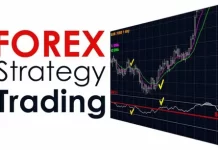Investing can be an exciting but daunting endeavour, and knowing where to begin and how to get the proper foundation for success can be difficult. The world of trading is complex, with many factors influencing an investor’s ability to make money. Knowing which elements should play the most critical roles in one’s investment choices can make all the difference when it comes time to reap or lose investment returns.
In this article, we’ll dive into some critical factors so investors can better understand what contributes to or detracts from successful trading decisions. Ready? Let’s go.
Table of Contents
Understanding Market Trends and Movements
Understanding market trends and movements is crucial for any business looking to succeed in today’s fast-paced and highly competitive market. To stay ahead of the competition and make informed decisions, businesses must be able to identify and analyse market trends and movements. By doing so, they can anticipate changes and adapt their strategies accordingly. Furthermore, staying up to date with market trends and movements allows businesses to identify and exploit new opportunities.
Whether you’re a small start-up or a large multinational corporation, understanding market trends and movements is critical to maintaining a competitive edge in today’s ever-changing business landscape. ADSS can help you to identify and analyse trends to stay one step ahead of the competition.
Analysing Risk vs Reward Ratios
The risk vs reward ratio is essential to consider when making trading decisions. Investors must be aware of the potential risks associated with any investment they make and the potential rewards. It allows them to make informed decisions based on their risk appetite and financial objectives.
Investors should also be aware of the market conditions in which their investments will be made. Knowing when to take a risk and when to play it safe can make all the difference between success and failure. By understanding your risk vs reward ratio, you can maximise your returns while minimising unnecessary risks.
Implementing a Long-Term Trading Strategy
Having a long-term trading strategy in place is vital to successful investing. Developing a plan that considers your risk tolerance, investment objectives, and the market conditions you are entering is crucial.
Your strategy should also include an exit plan for when it’s time to close out positions or move on from investments that aren’t meeting your expectations. It will help ensure that losses don’t spiral out of control and put your investments at risk. By having a long-term strategy in place, investors can make informed decisions based on their goals and current market conditions.
Researching Different Types of Instruments Available to Trade
Researching the different financial instruments available for trade is vital for successful investing. Each financial instrument has unique characteristics and risk-reward profiles, so investors must understand how each one works before trading. It includes research into stocks, bonds, futures, options, currencies, commodities, etc.
By researching different types of instruments and understanding their associated risks and rewards, investors can make informed decisions about which ones are right for them. It will help ensure that investments align with individual goals and objectives.
Developing an Effective Money Management System
An effective money management system is essential for any investor looking to succeed. Knowing when to invest and how much capital to allocate to each position is vital to successful trading. A sound money management system should include risk control measures such as stop-loss orders and take-profit targets, which will help limit losses and maximise potential gains.
A well-thought-out money management system can make all the difference between success and failure when investing. By taking the time to understand your financial goals and develop an appropriate action plan, you’ll be better prepared for whatever the markets may bring.
Utilising Technical Indicators to Make Better Decisions
Technical indicators are another critical factor when it comes to successful investing. Investors can identify patterns and trends by studying the market’s price movements to help inform their decisions. By using charting tools and technical indicators such as moving averages, RSI, MACD and others, investors can better understand where prices are headed in the future. It gives them valuable insight into when to enter or exit positions for maximum returns.
Additionally, technical indicators can help investors maintain their discipline when trading, as they can act as a warning system for potential losses and give traders time to re-evaluate their positions before making rash decisions.
Conclusion
Making successful trading decisions requires a comprehensive understanding of the market and an informed approach to risk management. By being aware of these critical factors and developing a tailored strategy that considers individual preferences and objectives, investors can better prepare themselves for whatever the markets may bring. With this knowledge in hand, investors can be more confident in their investments and potentially achieve tremendous success in the long run.








